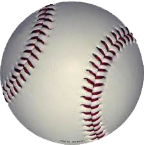
Prevent Baseball Injuries
By Nashville’s Baseball Doctor
Damon H. Petty, M.D
Things to know about baseball injuries:
● Most of the baseball players I operate on before the age of 18 get started on their injury in little league, between the ages of ten and fourteen.
● It’s usually the best players who end up needing surgery because their coaches are more likely to play them too much and allow them to play when sore or injured.
● Almost all arm injuries in baseball players are overuse injuries. These are caused by the accumulation of small injures to the ligaments, tendons, growth plates and bones in the throwing arm that occur whenever the player throws. These usually heal during periods of rest at a rate faster than they occur during the sport. When these small injuries occur at a rate faster than healing can occur, overuse injuries result.
- - The best way to avoid overuse arm injuries is to limit the amount of throwing done at young ages.
- - The second-best way to avoid overuse arm injuries is to do proper maintenance exercises for strengthening whole body and stretching the shoulder muscles.
- - The third-best way to avoid throwing injuries is to use proper mechanics for throwing.
● Other injures in baseball are less avoidable. These include base-running injuries from sliding or collisions, fielding injuries from ballstrikes or collisions with other players, and being hit by a pitch. Certain precautions can still be taken.
- - Proper feet-first sliding technique can reduce the chance of ankle fracture or sprain.
- - Head-first sliding is much more dangerous than proper feet-first sliding and can result in shoulder dislocation and/or tears of the rotator cuff or labrum that can require surgical repair, injuries to the eyes, face or neck (including fracture), and cleat injuries to the hand and arm. Youth baseball coaches should discourage head-first sliding.
- - Proper communication on-field between coaches and base-runners and between players can reduce collisions.
- - Appropriate lead-extremity (elbow, ankle, and hand) protection can prevent extremity injuries to batters from being hit by a pitch or foul ball.
● Throwing through pain increases the chances of a surgical injury by 37 times.
● Most of the baseball players I operate on before the age of 18 get started on their injury in little league, between the ages of ten and fourteen.
● It’s usually the best players who end up needing surgery because their coaches are more likely to play them too much and allow them to play when sore or injured.
● Almost all arm injuries in baseball players are overuse injuries. These are caused by the accumulation of small injures to the ligaments, tendons, growth plates and bones in the throwing arm that occur whenever the player throws. These usually heal during periods of rest at a rate faster than they occur during the sport. When these small injuries occur at a rate faster than healing can occur, overuse injuries result.
- - The best way to avoid overuse arm injuries is to limit the amount of throwing done at young ages.
- - The second-best way to avoid overuse arm injuries is to do proper maintenance exercises for strengthening whole body and stretching the shoulder muscles.
- - The third-best way to avoid throwing injuries is to use proper mechanics for throwing.
● Other injures in baseball are less avoidable. These include base-running injuries from sliding or collisions, fielding injuries from ballstrikes or collisions with other players, and being hit by a pitch. Certain precautions can still be taken.
- - Proper feet-first sliding technique can reduce the chance of ankle fracture or sprain.
- - Head-first sliding is much more dangerous than proper feet-first sliding and can result in shoulder dislocation and/or tears of the rotator cuff or labrum that can require surgical repair, injuries to the eyes, face or neck (including fracture), and cleat injuries to the hand and arm. Youth baseball coaches should discourage head-first sliding.
- - Proper communication on-field between coaches and base-runners and between players can reduce collisions.
- - Appropriate lead-extremity (elbow, ankle, and hand) protection can prevent extremity injuries to batters from being hit by a pitch or foul ball.
● Throwing through pain increases the chances of a surgical injury by 37 times.
Tips for avoiding baseball injuries:
● Pitchers should follow the USA Baseball guidelines for rest between outings.
- - View Guidelines
● Pitchers should also factor pitches thrown during lessons, bullpins and other practice sessions into their rest requirements
● Young pitchers should develop the fastball and changeup, not breaking pitches.
● Warm up properly before each practice and game.
● Wear appropriate protective gear.
● Communicate properly during play. This includes both action communication and proper communication between players and coaches regarding arm soreness and injury.
● Pitchers should follow the USA Baseball guidelines for rest between outings.
- - View Guidelines
● Pitchers should also factor pitches thrown during lessons, bullpins and other practice sessions into their rest requirements
● Young pitchers should develop the fastball and changeup, not breaking pitches.
● Warm up properly before each practice and game.
● Wear appropriate protective gear.
● Communicate properly during play. This includes both action communication and proper communication between players and coaches regarding arm soreness and injury.
Tips on Pitching Technique
● Understanding the basic biomechanics of pitching can help young athletes develop their full potential safely and more efficiently.
● Proper technique is paramount in safe development of pitching velocity.
● Rick Peterson and 3P Sports can help analyze a young pitcher’s technique and offer help in improving it.
-- Identify and Fix the Flaws in Your Pitching Mechanics
● Technical danger signs to watch for with youth pitchers:
- - Improper front foot placement relative to target
- - Low elbow relative to shoulder
- - Elbow leads at hand separation
- - Vertical trunk angle at ball release
- - Early trunk rotation (excessively open)
● Understanding the basic biomechanics of pitching can help young athletes develop their full potential safely and more efficiently.
● Proper technique is paramount in safe development of pitching velocity.
● Rick Peterson and 3P Sports can help analyze a young pitcher’s technique and offer help in improving it.
-- Identify and Fix the Flaws in Your Pitching Mechanics
● Technical danger signs to watch for with youth pitchers:
- - Improper front foot placement relative to target
- - Low elbow relative to shoulder
- - Elbow leads at hand separation
- - Vertical trunk angle at ball release
- - Early trunk rotation (excessively open)
[Sleeker_special_clear]

